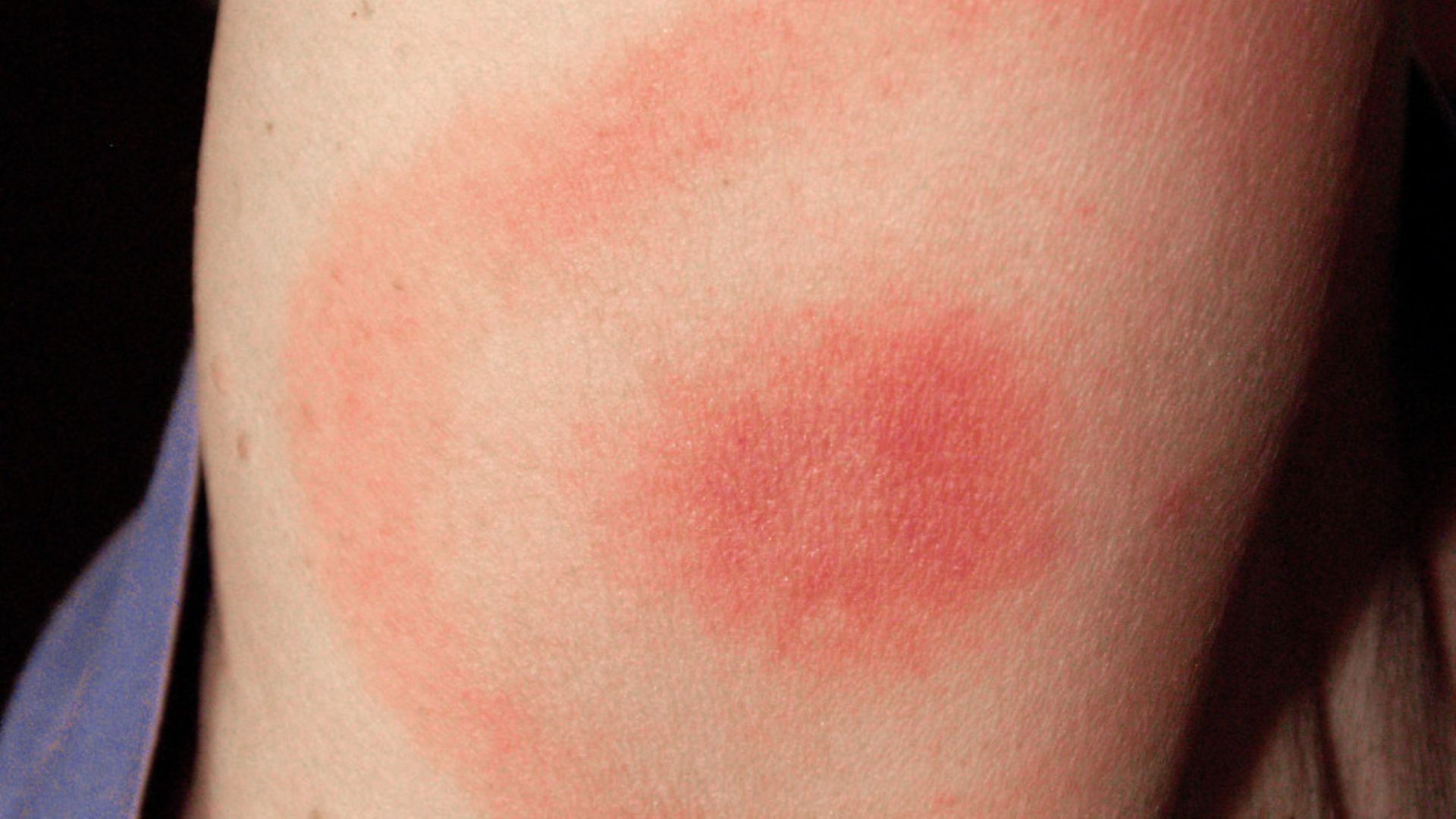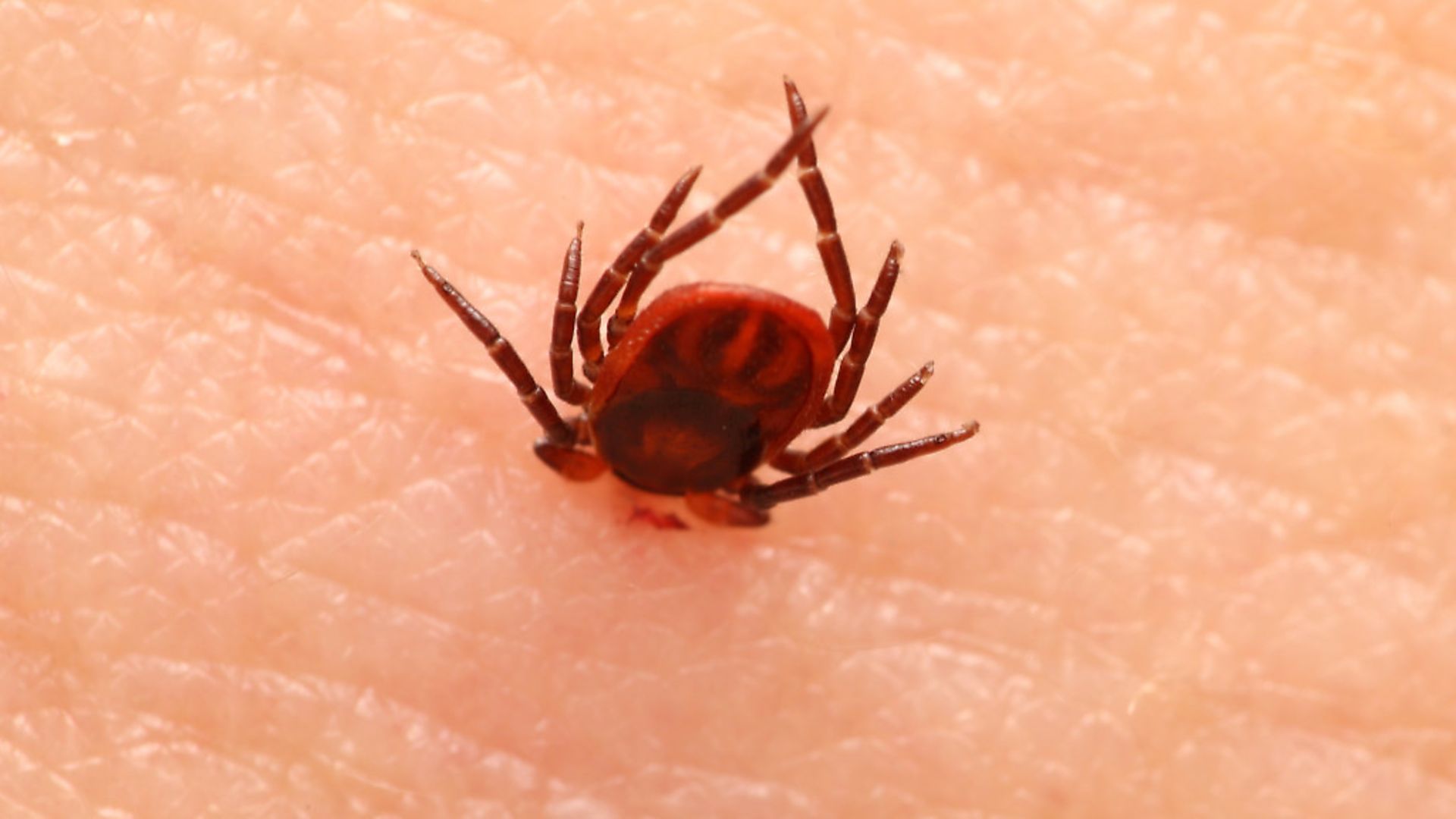Tim Pilbeam shares his experience of what it is like to live with Lyme disease, and how even getting a clear diagnosis can prove difficult
 credit: Archant
credit: Archant
As soon as I woke up, I knew it had started again. I had been fine for the past two months, but my thick head, aching throbbing knees and instant fatigue told me that the next few weeks would be tough. The tray of pills packed away in the bathroom would be coming out again – seven large blighters twice a day. Great!
I lay there in bed, knowing I would be starting the day with 50% energy levels and, by the afternoon, all I would want to do is sleep… but I knew that if I tried, I wouldn’t be able to. Frustration set in, and then reflection. This is real. This can happen to anyone, hunter or not.
 credit: Archant
credit: Archant
Feeling rough!
It was four years ago. I was walking up the steps from Embankment to Charing Cross station. It was my knees that were complaining, aching like mad, and I felt totally worn out. For a start, I put this down to the previous late night out with Mrs P, enjoying a weekend in town, seeing The Jersey Boys and then heading off to a Ramsay restaurant until the early hours. As I climbed to the top of the steps, just before entering the station, my language was about as blue as the young head chef’s from the previous night. He wanted perfection… what I wanted was my energy back!
What the heck was wrong with me? Over the previous weeks I had felt fine, looking forward to spending my hard-earned cash. I know the word ‘shopping’ does, on many occasions, have a devastating effect on my morale, but this was worrying, and perhaps the first time I had realised that summats weren’t right with this lad from Sussex.
Another year passed, but that experience made me monitor my body, not only in terms of my physical condition, but also how I felt mentally. I have to be honest, I had struggled with regular bouts of fatigue for the previous 10 years, but despite several trips to my local quack, nothing was found, other than being told I was working too hard!
Brain scans, blood tests and visits to a few specialists revealed nothing. I was beginning to accept that perhaps it was down to me being a typical bloke who had reached his 50s. Having said that, it was perhaps about time I did something about it. Like many, I am a busy person. I think my work/life balance is OK, despite what the wife thinks! Should I accept that this was just one of those things that some people go through in their life? What else could I do? What were the choices?
Before you old boys (and girls) start telling me to ‘man up’, I am fully aware that things do tend to ‘drop off’ or ‘start to go south’ once one reaches a certain age, but just hold onto those thoughts for a few moments. While I tend to agree, my situation needs to be put into perspective. I have always believed in ‘healthy body, healthy mind’, so I try to keep reasonably fit. I normally run three to five miles several times a week, regularly ride a road bike for 40-80 miles and play competitive sport every weekend during the winter months with young lads who are well under half my age! OK, on the following morning it is becoming increasingly harder to put my socks on, but hey, that is a minor detail.
 credit: Archant
credit: Archant
Finding out why
I read an article in a Sunday newspaper written by a very wealthy individual, namely John Caudwell, (founder of Phones4U) whose 19-year-old son was more or less paralysed and bedridden, but despite years of testing and visits to specialists, no clear diagnosis was concluded. As a last resort, he took his son, together with a few members of his family, off to a specialised clinic in Germany and within a very short time the mystery of his son’s crippling condition was solved. He was diagnosed with Lyme disease, as were several members of his family.
After reading about John’s sad and emotional tale of misery, I immediately remembered the time I found a dark ‘bug’ feeding from my inner leg, high in the groin area. It was over 20 years ago, after a week’s hind culling on the Scottish Caingorms. At that time, I gave it little thought, as I was not fully aware of the disease or its implications if it is not dealt with immediately. They say ignorance is bliss, but not in this case. This hungry, horrible-looking creature was deeply attached to me, savouring my pure Sussex blood, and all I did was to incorrectly yank it off and throw it in the bin. At the same time, I noticed that a round 3-4” bulls eye rash, with different coloured red and pink rings, had appeared around the bite, but sadly due to my naivety I did nothing about it.
I was tested many years ago by my local GP, who said that I didn’t have Lyme, but now I know that this is far from the truth. I understand from further research that there is a 30% chance of a blood test coming back as a false negative. This means the patient is given a negative result, when in fact they do actually have the disease.
Lyme, very simplistically, is made up of several variants or forms of a bacteria called Borrelia. It can be very hard to trace in blood, and depends on many scientific things that I do not quite fully understand. In other words, it is a rather clever little blighter!
After reading John Caudwell’s article, I was reasonably sure I had the disease, despite the negative blood result, but the bouts of fatigue were becoming longer and more intense, and starting to affect my quality of life.
I spoke to a shooting friend whose Swedish wife also had Lyme. She had been diagnosed by a Swedish practitioner of homeopathic medicine who thought he may be able to help to cure me. By luck, he was visiting the UK at that time, so I booked an appointment and within 10 minutes I found myself lying on a bed with a man moving his hands above and around my body, holding a pair of short metal dowsing rods! The last time I saw dowsing rods was on the farm when I asked a local farmer to find a deep land drain.
He then laid tiny glass samples on my stomach containing various diseases, and when a form of Borrelia was used, the rods twitched and his arms felt a reaction. The principle of dowsing is the same, but the dowser stick goes either up or down. In most cases, it goes down if the person is infected with Lyme. Really!
He explained: “I first test the strength of a muscle response (i.e. in the arm) then again when a test sample of bacteria is placed on the body. The difference, if any, in the muscle response determines which test sample is present in the body. Thus, if a muscle response was found to be weak, that shows that your body is contaminated with the bacteria in the sample.”
 credit: Archant
credit: Archant
So, there we have it! I had a Borrelia, but not only that, I had a Borrelia bugdorferi infection, and now I just needed to get rid of it. I must admit, this all seemed a bit whacky and I was not entirely convinced, but it was the start of me actively doing something about the worsening effects of whatever I had.
What is Lyme?
In simplistic terms, Lyme is caused by the bacteria Borrelia being passed into the blood stream by an infected tick while feeding on the blood. Before I continue, I must say that I am not medically qualified nor have I undertaken any scientific research into Lyme. What I write is based on my own and other sufferers’ personal experiences, and from internet research. If I am not 100% scientifically or medically correct, I apologise, but all I am trying to do is draw attention to the disease. I may be too simplistic, but I hope it will make it easier for me to explain the most important facts.
Ticks can be passed to humans (and dogs) from dogs, cats, deer, birds, sheep, and also from vegetation such as grass, bracken and bushes. The name Lyme originated from the town of Lyme in Connecticut, USA, where many children were affected by a common medical infection, the source of which was eventually traced to ticks within the vicinity.
Ticks are not only found in the countryside, but also in any open areas such as parks and gardens. A case in point is that of rugby World Cup-winning player Matt Dawson, who was bitten in a park close to Chiswick, London, and ended up having a heart operation after 18 months of tests. There are many deer stalkers, hunters, farmers and even walkers who have Lyme but are not aware that they have it. Some feel fine, but many have reoccurring issues, with some crippled by the effects of chronic Lyme.
The symptoms, as mentioned earlier, is where it becomes rather vague and confusing, not only for us but also for the doctors, as symptoms seem to vary so much from one person to another. Many of the symptoms could well be diagnosed as something else either in isolation or as part of another medical condition.
For example, I read that these are a few of the more common symptoms: minor to major mental and physical chronic fatigue (could be anaemia, gluten intolerance or diabetes); brain fogging; headaches; memory loss; headaches with neck pain (ME or lifestyle issues?); the larger joints ache, but this comes and goes, moving or migrating around the body; flu-like symptoms; short-term memory loss; hot and cold flushes; skin complaints; tingling sensations; blurred vision and many more.
Put all of these together and it explains why it is perhaps so hard for doctors to identify Lyme. The variety of symptoms is so extensive, it is almost impossible to make a precise diagnosis. This is why it is called the Great Pretender!
Unfortunately, there are other complications. In many cases, not only is the Borrelia parasite transmitted from the tick, but also over 300 co-infections can be passed into the blood. The most common co-infections are Babesia, Bartonella, Ehrlichia, Mycoplasma, RMSF and Anaplama, and they can cause even more complications. Scary!
 credit: Archant
credit: Archant
Me? I suffer from severe aching in my major joints – this comes and goes, changing in intensity, migrating or moving around the body. One day it may be the knees and the next it is my elbows or wrists. I also have a thick or foggy head, with my brain feeling like it is not attached to my head, which makes me very tired and more and more irritable.
This in turn affects my enthusiasm for physical exercise, but I have learnt that while I may feel tired, if I make myself do things, it does not adversely affect my strength or endurance. Interestingly, I do not suffer from regular bouts of flu or common colds, as many sufferers of Lyme do.
Annoyingly, it also affects my sleep patterns. After a normal day’s work, I find myself sleeping more and more in the early evening, and yet when I do go to bed often cannot sleep well, despite feeing totally exhausted. Or, I wake up in the night, and am unable to return to sleep for hours.
As you can imagine, experiencing this cocktail of medical problems and feeling permanently tired and lethargic makes me feel a tad fed up, to put it mildly. Ask my wife! More worryingly, starting a dialogue with a friendly GP in which you complain about chronic fatigue, feeling low, not being happy and generally feeling fed up with life can cause him to mention that ‘D’ word – ‘depression’! Very quickly you are backtracking, grasping the door handle and trying to extricate yourself from the surgery as fast as possible, as this is the last thing you want to mention if you are a holder of a shotgun or firearm certificate.
Research suggests that 30% of all ticks are infected with the disease, but in some areas it will be higher and in many, much lower, all depending on environmental and animal movements. Many people will be unknowingly bitten by a tick, as the bulls eye rash does not always appear (only 80% of the time will it be visible). All in all, it is rather alarming.
If you think you have been bitten, it is advisable to visit your GP and they may offer you a dose of everyday antibiotics and monitor you for a few days. But be aware – unfortunately many doctors are ill-informed about the disease, though there is an increasing awareness of Lyme filtering down to local surgeries, which is comforting.
Personally, I would take a two-week dose of antibiotics. If you have been bitten, it is not worth the risk! My young doctor admitted that he knew very little about Lyme, but was more than happy to prescribe common antibiotics as this was mentioned on his quacks’ Google page that he consulted while speaking to me.
Some research says that a week’s programme of antibiotics is not long enough and should be stretched to at least two weeks, but that is for the experts to decide. If, like me, you were bitten a long time ago, things can get a little complicated. Please be aware, I read that antibiotics are not always 100% effective, even if they are taken within four weeks of being bitten. The Borrelia, in some cases, is still traceable in the body even after 9-12 months, allowing the disease to flare up again.
It is also accepted by many experts that if you have long-term or chronic Lyme, it is very hard or near impossible to eradicate, despite some claims to the contrary. Great, just the news I wanted to hear.
 credit: Archant
credit: Archant
 credit: Archant
credit: Archant
 credit: Archant
credit: Archant
 credit: Archant
credit: Archant
 credit: Archant
credit: Archant